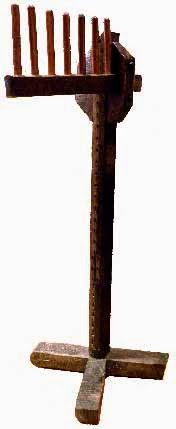FOR A DOSE OF DORSET IN YOUR INBOX, SUBSCRIBE RIGHT -->
High on the wall of the St Peter's Church in Dorchester is an unassuming eighteenth century marble memorial commemorating the death in 1774 of John Gordon a member the illustrious Clan Gordon. The inscription then takes a sinister turn when it mentions Gordon's contribution to the quelling of a slave rebellion in Jamaica in 1760 and the humanity he displayed afterwards.
This slave rebellion mentioned so briefly touched on was one of the first serious slave uprisings and from all accounts its outcome far from humane.
The uprising is remembered as Tacky’s Rebellion, and its memory is preserved in a monument in Kingston, Jamaica. Tacky, a Coromantee chief by birth, was an overseer who, with a group of fellow tribesmen, fell on their British oppressors on Easter Sunday, a time when most whites would have been attending church.
What happened next is related by a contemporary witness:
"The rebellion amongst the Negroes has been of bad consequence to the whole island. Their design was to rise at Kingston and Spanish town, and to have set fire to these towns in several places at once, and to murder everybody in them.
They afterward seized what arms and ammunition were to be found, and went to a small fort at Port Maria, where there was only one white man and a Negro; they killed the white man, and took away three barrels of powder, and marched to another Estate, where the overseer was apprised of their intentions. He defended the house for an hour and a half, and the rebels were going away; upon which he opened the door, and wanted to bring them to their duty by speaking to them. Whilst he was doing so, one of his own Negroes shot him in the back. The rest rushed in and killed all the white people except one, whom they mangled in the most awful manner, cutting off his nose, and leaving him for dead. They cut off the overseer's head, put his blood in a calabath, mixed gunpowder with it, and eat their plantains dipped in it, as they did by every white man they killed. In short their savage barbarity can scarcely be paralleled."
Defeat was inevitable, and retribution swift and cruel...
"...There are about 25 of them made prisoner, who are severally carried to Spanish Town and the places they committed their barbarities. Ion who had not been the rebel actually was burnt alive for having sworn to cut his master's and mistress's heads off and make punch bowls of them. On Saturday I heard trials of four more, who were found guilty of being concerned in the murder of white people. Two were burnt alive the same day; two were hanged, their bodies burnt, and their heads stuck on poles. Two were tried at Kingston for the same offence and found guilty. Their sentence was to be gibbeted alive 20 feet high. One of them lived nine days without a drop of water, hanging in an excessive hot place."
Little evidence is shown of the 'humane treatment' mentioned on John Gordons memorial the account omitting to mention that several rebels were slow roasted in front of open fires.
Tracing John Gordon is all but impossible- there was always a strong Scots presence in Jamaica and a Gordon, even a well connected one is like looking for a needle in a haystack.
A John Gordon, whose dates correspond with the John Gordon of Dorchester, was transported to slavery to a nearby Martinique for taking part in the battle of Culloden in 1745 ( as many Scots, including well connected ones were) so could have well served his time and travelled to Jamaica by 1760 and taken part in this shameful episode...its a romantic notion if nothing else...


















































